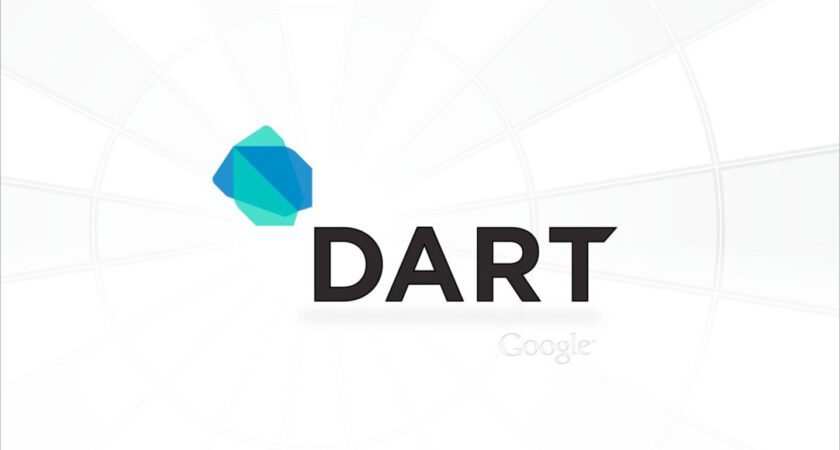Introduction
Google created the object-oriented, general-purpose programming language known as Dart. It is employed in the development of desktop, server, and mobile applications. Because Dart is a client-optimized language, it runs quickly across all platforms. Additionally, it is a compiled language, meaning that prior to execution, it is changed into machine code.
Though it was only first introduced in 2011, Dart has grown to be one of the most widely used programming languages worldwide in a short amount of time. This is caused by several things, such as:
- Dart is a very versatile language that can be used to create a wide variety of applications.
- Dart is a relatively easy language to learn, making it a good choice for beginners.
- Dart is well-supported by Google and the Flutter SDK, which provides a wide range of tools and libraries for developers to use.
Dart is also a very powerful language, and it is used by some of the biggest companies in the world, including Google, Microsoft, and Amazon.Read about our other post at codingshikho.com
Dart Basics
Here are some of the basics of the Dart language:
- Variables and data types: Dart supports a wide range of data types, such as texts, booleans, integers, and floating-point numbers. Data is stored in variables, and when they are defined, they need to have their data types specified.
- Operators: Dart supports a variety of operators, including arithmetic operators, relational operators, and logical operators. Operators are used to perform operations on data.
- Control flow statements: Many control flow statements, such as if, else, while, and for statements, are supported by Dart. Programmers can manage how a program is executed by using control flow statements.
- Classes and objects: In Dart, classes are used to define objects. Data and behavior are contained in objects, which are instances of classes.
Object-Oriented Programming in Dart
A programming paradigm known as object-oriented programming (OOP) makes use of objects and how they interact to create computer programs and applications. Code and data are contained in objects, which are self-contained entities. The attributes of an object store data, and the methods of an object store code.
OOP is supported by the general-purpose programming language Dart. Classes and objects are the usual organizational units of dart programs and are used to specify an object’s behavior and structure. Classes have instances that are objects.
Here are some of the key concepts of OOP in Dart:
- Classes: Classes are used to specify an object’s behavior and structure. An object’s methods and attributes are defined by its class.
- Objects: Objects are instances of classes. Objects contain data and code.
- Inheritance: Programmers can build new classes based on pre-existing classes by using inheritance. This enables programmers to build class hierarchies and reuse code.
- Polymorphism: Programmers can create code that works with a variety of object kinds thanks to polymorphism. Code becomes more reusable and versatile as a result.
Building Web Applications with Dart
Using the Flutter framework, web applications may be developed with Dart. Using a single codebase, developers can create native-looking apps for Android, iOS, the web, Windows, macOS, and Linux with Flutter, a cross-platform UI toolkit.
Installing the Flutter SDK and starting a new Flutter project are prerequisites for using Flutter to develop a web application. Upon establishing a fresh Flutter project, you can commence composing code to construct your web application.
You can utilize a variety of widgets from Flutter to create the user interface of your web application. These widgets come in the form of photos, text fields, and buttons. The routing system in Flutter may also be used to build different pages for your web application.
After developing all of the code for your web application, use the flutter build web command to build it for the web. As a result, a directory holding the web application’s built files will be created. After that, you may upload these files to a web server so that users can view your web application.
Here are some of the benefits of using Dart to build web applications:
- Dart is a fast and efficient language. Dart code is compiled to native machine code, which makes it very fast.
- Dart is a cross-platform language. Dart code can be run on a variety of platforms, including web, Android, iOS, Windows, macOS, and Linux. This means that you can write your code once and deploy it to multiple platforms.
- Dart is a modern language. Dart has a number of modern features, such as generics, async/await, and null safety. This makes it a good choice for building modern web applications.
Conclusion
Strong typing and security for developers are features that make Dart a contemporary, simple-to-learn programming language with a clear and accessible syntax. It shines at creating mobile apps, especially when used with the Flutter framework to create cross-platform, native-like apps. The flexibility of Dart extends to server-side and web programming. Its open-source nature, expanding ecology, and performance all add to its allure. Even while it’s becoming more and more well-liked, Dart could not have as large of a library ecosystem as some other languages, which might limit its applicability for some niche projects. All things considered, Dart is a good option for programmers looking for efficiency and cross-platform functionality, particularly in the field of developing mobile apps.
